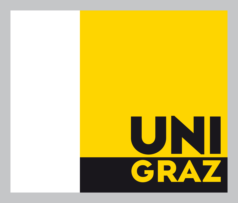Exercises: Inverse Problems WS 2021/22
Course MAT.405UB Uni-Graz online
Content:
Introduction:
objectives and applications (differentiation, deconvolution, Radon transform), illposedness of equations, compact linear operators, singular value decomposition, Moore-Penrose inverse.Regulatrisation of linear inverse problems: linear methods of filtering (TSVD, etc.), Tichonov regularisation, source condition and convergence rates, choice of parameters (a priori, a posteriori, heuristic), optional: projection methods (e.g. Galerkin), iterative regularisation (Landweber, CG etc.).
Nonlinear inverse problems: illposedness (relation to linear problems), nonlinear Tichonow regularisation, optional: e.g. electrical impedance tomography (EIT), Calderon problem, inverse scaterring problems (Helmholtz).
Objective:
Creating and deepening the understanding of the topics addressed in the lecture MAT.500UB by the autonomous solution of exercise problems. To this end, every two weeks exercise sheets (roughly a week before the next exercise class) are provided whose results will be represented by the students during the coming exercise classes.The exercise classes:
The exercise classes take place every second Tuesday from 12:00 until 13:30 during the Wintersemester 2021/22 in the seminar room SR 11.34 (0011030012) or virtually in unimeet if the corona situation does not allow for in-person classes (in this case you will certainly be informed in time). On the day the classes take place you can declare until 11:00 in Moodle which problems you have managed to solve (and are ready to present). Additionally, you have to upload your solutions as pdf, jpg, png (a photo of your handwritten solution suffices) onto Moodle, if you fail to do so all solved problems of that week will be set void. Same holds if evidently a problem was not solved autonomously or a solution is completely inadequate.Grading:
As mentioned above, you declare which problems you solved and are ready to present, in particular, you need not solve all problems but at least half, however, the more you solve the more points for the grade are gained. More precisely, one receives for the percentage of solved problems a Problem-Factor (POF) according to piecewise linear interpolated between (50%,0), (90%,1) and (100,1.15), meaning you get between 0 and 1 POF for between 50% and 90% solved, and a bonus can be obtained for surpassing 90%).
For every problem, a student will be chosen at random (from all students who solved said problem) who presents his solution on the blackboard. Aside from the mathematical correctness of the solution, high importance is also attached to giving a good presentation and possessing knowledge of the general context of the problem. The presentation will be awarded 2, 1, or 0 points, the full number if the solution is correct and a good presentation is given, 1 point if the presentation style is poor, or a significant part of the solution is incorrect, but still a not negligible part correct. The average of all points gained through presentation divided by 2 constitutes the Presentation-Factor.
Finally, at the end of the semester, there will be an exam that impacts the grading. The Exam-Factor corresponds to the ratio of points achieved in the exam to totally possible points.
Each of the three factors Problem-Factor (POF), Presentation-Factor (PEF) and Exam-Factor (EXF) is between 0 and 1 and contributes one third to the grade, more precisely you get total points P=100/3*(POF+PEF+EXF) and
| Grade: | Very good | Good | Satisfactory | Adequate | Unsatisfactory |
| P: | >87.5 | 87.5 -75.0 | 75.0-62.5 | 62.5-50.0 | <50.0 |
Moreover, POF must be non-negative and PEF and EXF must be greater equal 0.5, meaning at least half the number of problems must be solved, the average presentations must be 1 or greater and half of the points must be achieved in the exam.
Covid-19 Rules:
In the case of orange or red Covid traffic light, the exercise classes take place virtually, otherwise in-person, where the basic process and grading remain the same (you can use the uploaded solution for visual reference in your presentation).
Problemsheets:
| Date | Problem-Sheet | Subject | Remarks |
| 12.10.2021 | 1. Exercise Sheet | The Moore-Penrose inverse | |
| 25.10.2021 | 2. Exercise Sheet | Singular value decomposition | Changed date of Exercise |
| 16.11.2021 | 3. Exercise Sheet | Regularization via spectral integration | |
| 30.11.2021 | 4. Exercise Sheet | Regularization and order optimality | Changed date of Exercise |
| 14.12.2021 | 5. Exercise Sheet | Parameter choice and iterative methods | |
| 18.01.2022 | 6. Exercise Sheet | Conjugate Gradients and Tikhonov Regularization | |
| TBD | Exam |

